At 9:20am on 15 February 2013, the people of the industrial town Chelyabinsk in Russia were starting their mornings when a light streaked across the sky.
Bright enough to outshine the Sun, people ran to windows to see the trail it left in the sky.
A few minutes later, a boom swept through the town, shattering windows, bringing down walls and knocking people to the ground.
That shocking sound was a meteor exploding overhead, but it wasn’t just the noise. Fragments of rock were blasted across the landscape by the blast, falling down on the snow like rain.
Videos from dashcams and CCTV cameras soon appeared on news channels around the world, sending meteorite hunters and researchers flocking to the town.
Among those who arrived after the airblast was a young PhD student just getting started in her journalistic career – me.
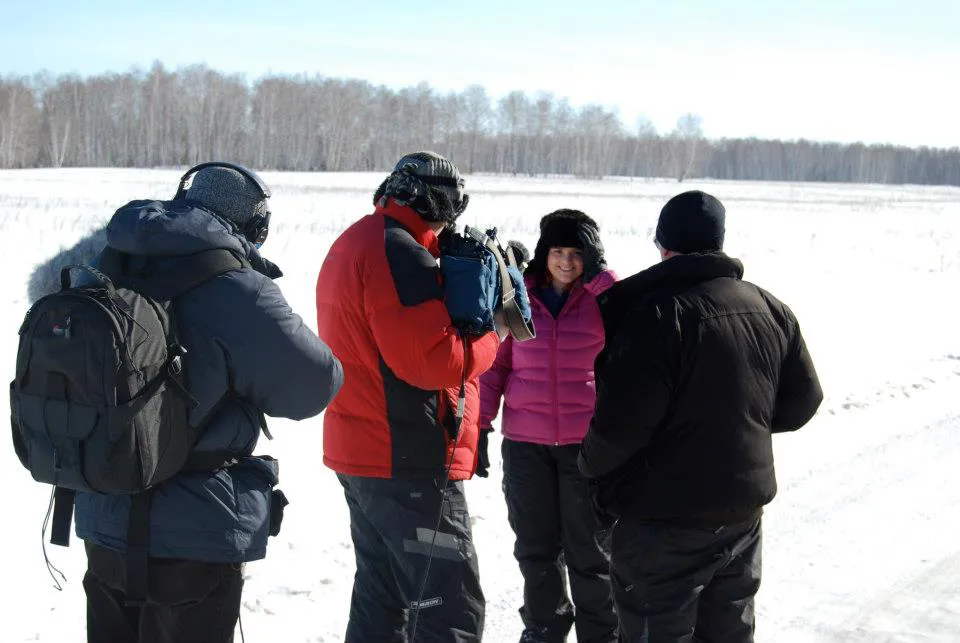
I’d been asked to present a documentary about the event with the rather dramatic title of Meteor Strike! Fireball from Space, which was how a film crew and I found ourselves knee-deep in snow during the Russian winter, three weeks following the explosion.
However, it was the very snow freezing my toes that made Chelyabinsk the perfect place for a meteorite hunt.
When the rocks fell onto untouched snow, the heat they picked up from their journey through the atmosphere melted a clear, obvious hole.
Find a hole, dig to the bottom and there’s a good chance you’ll find a meteorite.
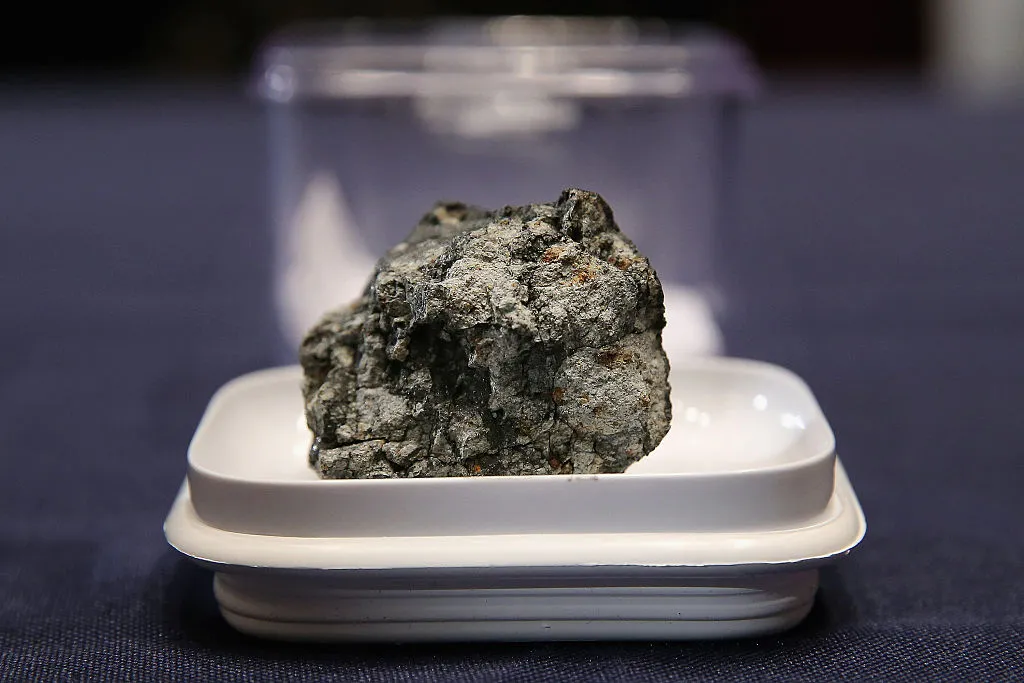
The area had been picked over by the time we arrived, but our director did manage to find a 1cm wide pebble.
It was pure black, covered in a fusion crust created by the heat of entry melting the surface.
There’s something magical about holding a freshly found meteorite in your hand.
This was a fragment left over from the birth of the Solar System. It had been in space for billions of years until just a few weeks ago.
And by this point, there was even a pretty good idea of where it had been.
"When a fireball is sighted in the sky, as was the case with Chelyabinsk, camera footage helps scientists to calculate where in space the rock might have originated – though this evidence isn’t usually enough on its own to know for sure," says Natalie Starkey, a geologist and author of Catching Stardust: Comets, Asteroids and the Birth of the Solar System.

Social media provided a wealth of camera footage, which planetary sleuths – both professional and amateur – had already set to work analysing, measuring the motion of the meteor and the shadows it cast, then comparing them to Google Maps.
It appeared that the meteor had hit the atmosphere at a shallow angle, travelling around 65,000km/h.
Any large pieces that survived would have come down around nearby Lake Chebarkul – where an 8m-wide hole in the ice had already been found.
Tracking the path back suggested that the meteor had probably been in an elliptical orbit, taking it from beyond Mars to almost the orbit of Venus, before striking our planet.
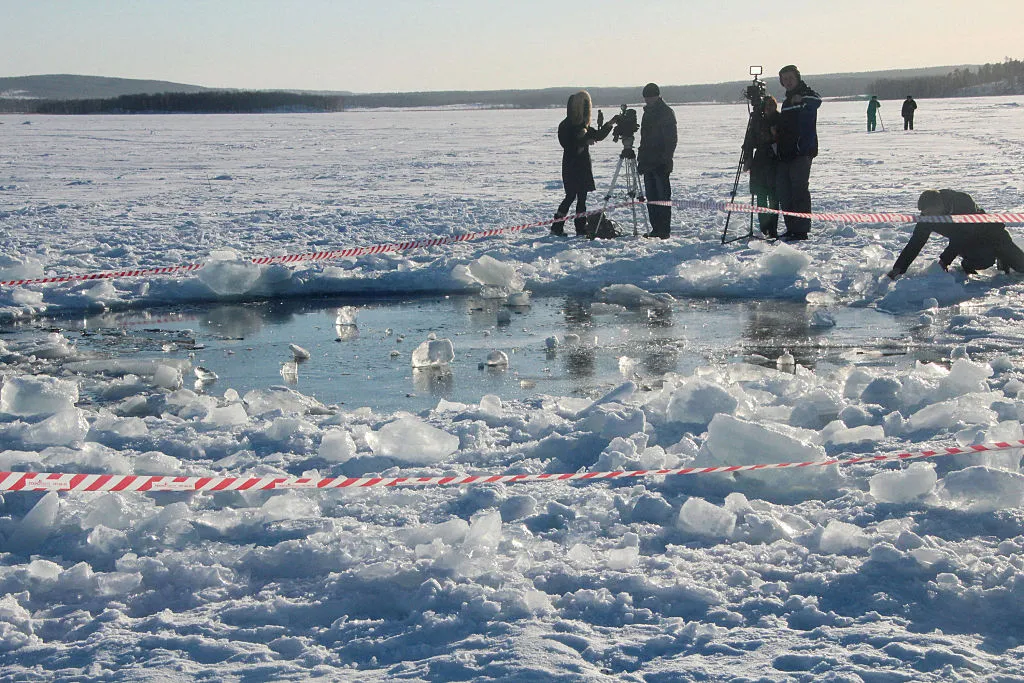
Another unusual source had recorded even more data: infrasound stations, which normally listen out for tests of illegal nuclear weapons, had picked up the explosion as far away as Antarctica.
These measurements indicated that the blast, at 500 kilotons, was 30 times more powerful than the bomb detonated at Hiroshima, which allowed them to estimate that the asteroid which struck the atmosphere had a mass of around 13,000 tonnes.
"That suggests the meteorite was around 20m in diameter, roughly the length of two double decker buses end-to-end. This is actually quite a small chunk of space rock, but it’s still extremely lucky it broke up into smaller pieces," says Starkey.
The infrasound recordings actually detected seven separate explosions, occurring between 83km and 30km in altitude.
While making the documentary, I’d discovered the reason for its repeated fractures first- hand when we arrived at the Ural Federal University in Yekaterinburg, a few hours’ drive from Chelyabinsk.
Their geologists had sent their own meteorite hunters to amass a sizable collection of meteorites, several of which had already been sliced up for closer examination.
I didn’t envy that task, as the rocks were remarkably fragile. Pieces crumbled off as you handled them, so it was no surprise the larger rock hadn’t made it to the ground in one piece.
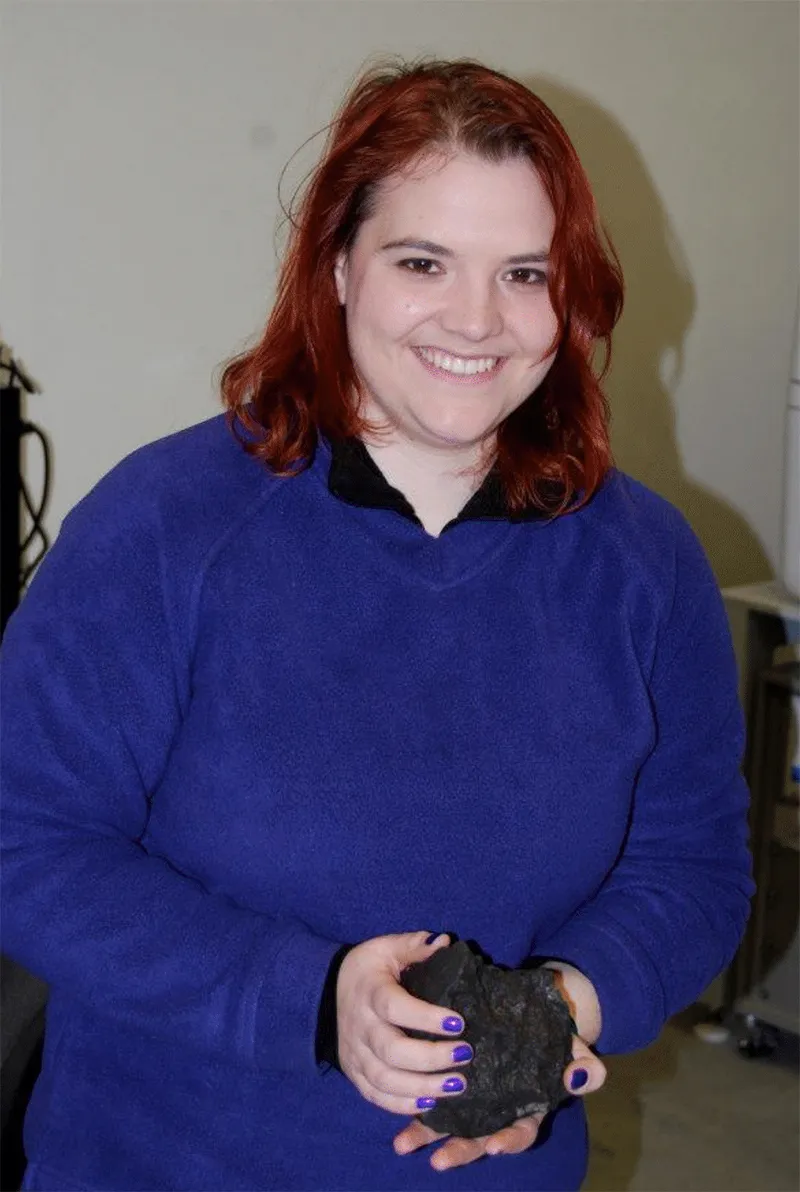
"Our atmosphere does a good job of slowing down space objects before they reach the surface of our planet," says Starkey.
"It’s not exactly like hitting a wall, but this deceleration results in the rock experiencing high temperatures and pressures, which can blow the meteor to pieces as all the heat and kinetic energy are released in an instant."
Looking at the meteorite samples under an electron microscope revealed the Chelyabinsk meteor was an ordinary chondrite, the most common type of space rock found on Earth.
These are stony meteorites made up of dust and grains called chondrules which were never incorporated into planets, meaning they represent the primal material from which the Solar System was built.
Unfortunately, I only got a brief glimpse of the work being done before having to return home, but geologists around the world continued to study the rocks.
On 16 October 2013, the collection got its biggest addition when a 540kg chunk was raised from Lake Chebarkul.
In the years after, dozens of papers were released about the fireball, covering everything from the meteorite itself to the response of the emergency services.
Together these built the picture of a space rock that had once been part of a larger asteroid in the asteroid belt between Mars and Jupiter, but at some point had been chipped off and sent on its fateful journey towards Earth.
Over time, the other falls were discovered and the Chelyabinsk meteorite samples became one of many in the catalogues (though my own small meteorite has always had pride of place on my desk).
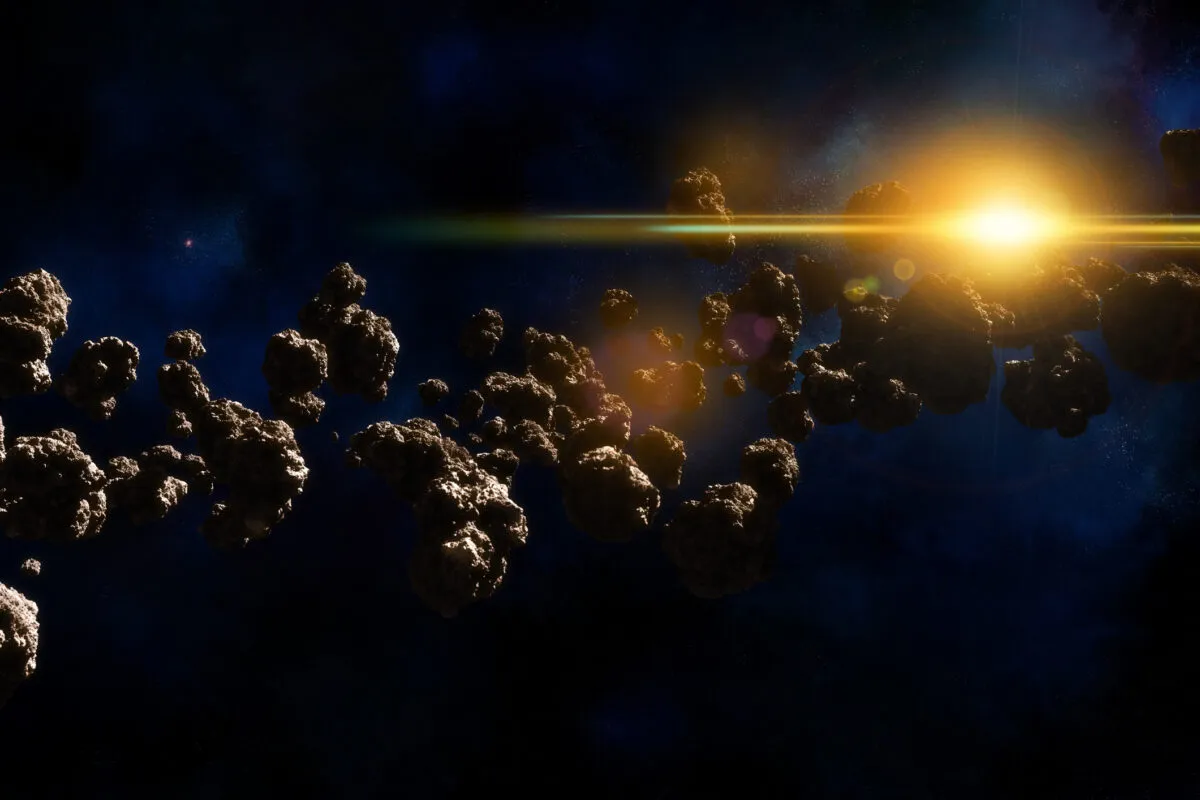
Yet there was still one outstanding, and niggling, question that researchers hadn’t reached a satisfactory consensus about.
When had the impacts that shattered the asteroid occurred?
"There was a debate about whether there were dozens of impacts or just one," says Craig Walton from the University of Cambridge.
It was a debate that he has spent the last six years trying to resolve.
"I first laid hands on the meteorite in 2016, when I did a summer research project at the Open University," says Walton.
"Chelyabinsk is one of the oldest rocky objects in the Solar System. It’s experienced a tumultuous history out in space and records a complicated history of collisions, but people hadn’t revealed the exact sequence of events."
This history is written in the dark veins that run through the Chelyabinsk meteorites.
These are shock melts, created by the intense heat of a collision melting the rock unevenly, meaning the date of their origin shows when an impact occurred.
Walton thought the key to their age might lie in the uranium within the melts.
The element radioactively decays to lead, and while the rock is cool, both of these remain trapped in the crystal structure of the rock.
When it’s heated up, however, the lead escapes while the uranium stays put.
"Based on the fact that we know the half-life of uranium to lead, we can tell how long the crystal has been cold for by measuring the ratio of these two, essentially taking the time since it was last in an impact," says Walton.
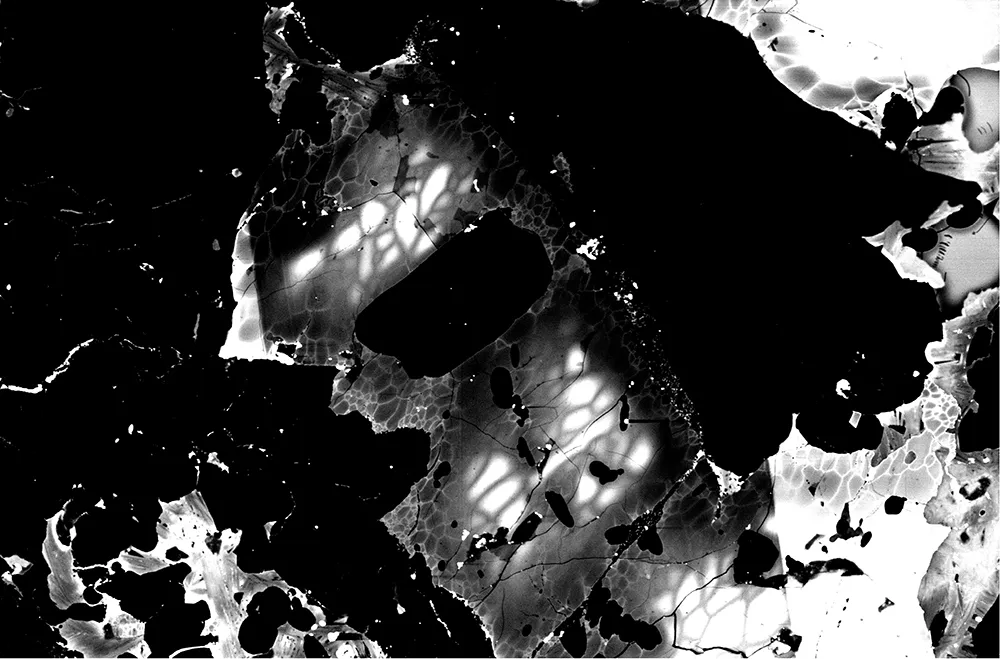
Getting the data, however, ended up taking six years, in part due to COVID-19 shutting down laboratories in the UK.
"I ended up sending the precious samples I had spent years looking at to Beijing," says Walton. "It got impounded at customs for a month."
Eventually the samples made it and the test results showed two distinct ages or events.
The most recent impact, which chipped the asteroid from its parent rock and sent it towards Earth, appears to have occurred within the last few million years.
But there was another event 4.45 billion years ago – around the time our own Moon was created.
"Chelyabinsk is not the only meteorite to report a big collision at this time," says Walton.
"One interpretation is that the massive collision that formed the Moon created debris, some of which was flung around the Solar System and struck asteroids.
"The other possibility is the planets were undergoing a final episode of reorganisation and the gravitational effects caused asteroids to bump into each other."
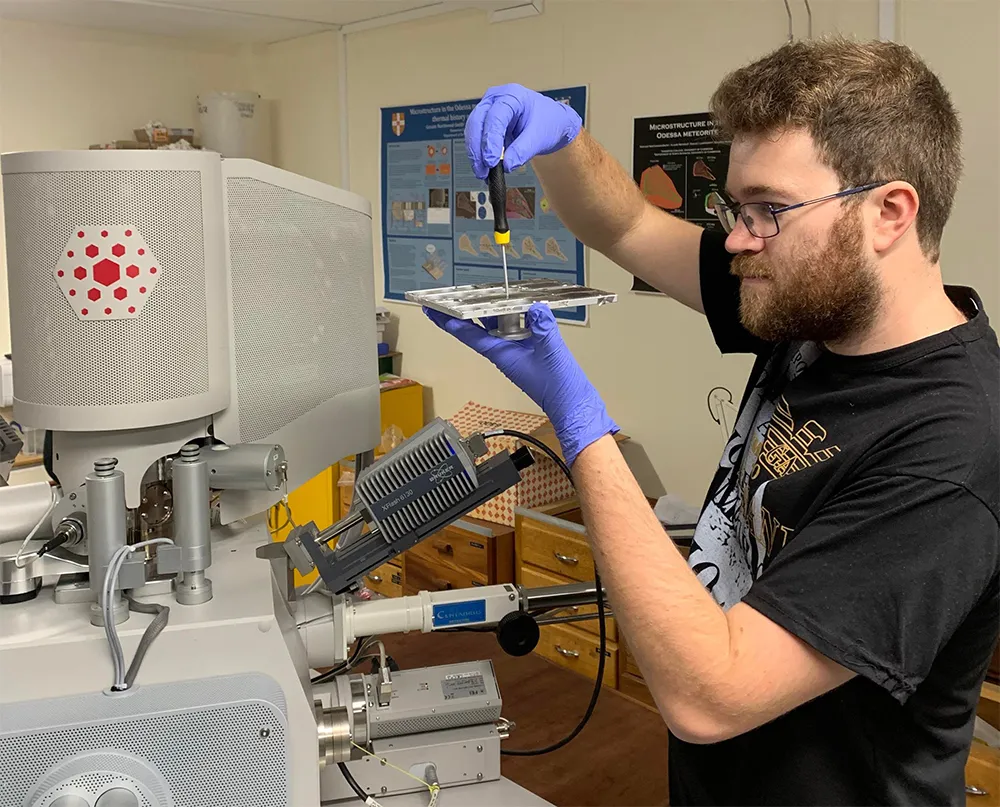
In the coming years, other researchers will no doubt return to the meteorites to confirm or deny Walton’s findings, or look for other pieces in the puzzle of our Solar System’s creation.
Though the meteorites might be one of the most common types, it is undeniably unique.
Its age means it has recorded a long swathe of planetary history and more is known about its journey through the atmosphere than any other space rock.
Add to that the huge quantity of meteorite material recovered, and there’s no doubt that the Chelyabinsk meteor will keep planetary geologists curious for years to come.
"It is right at the forefront of piecing together the Solar System’s history using meteorites," says Walton. "If you can explain Chelyabinsk, maybe you can explain everything else."
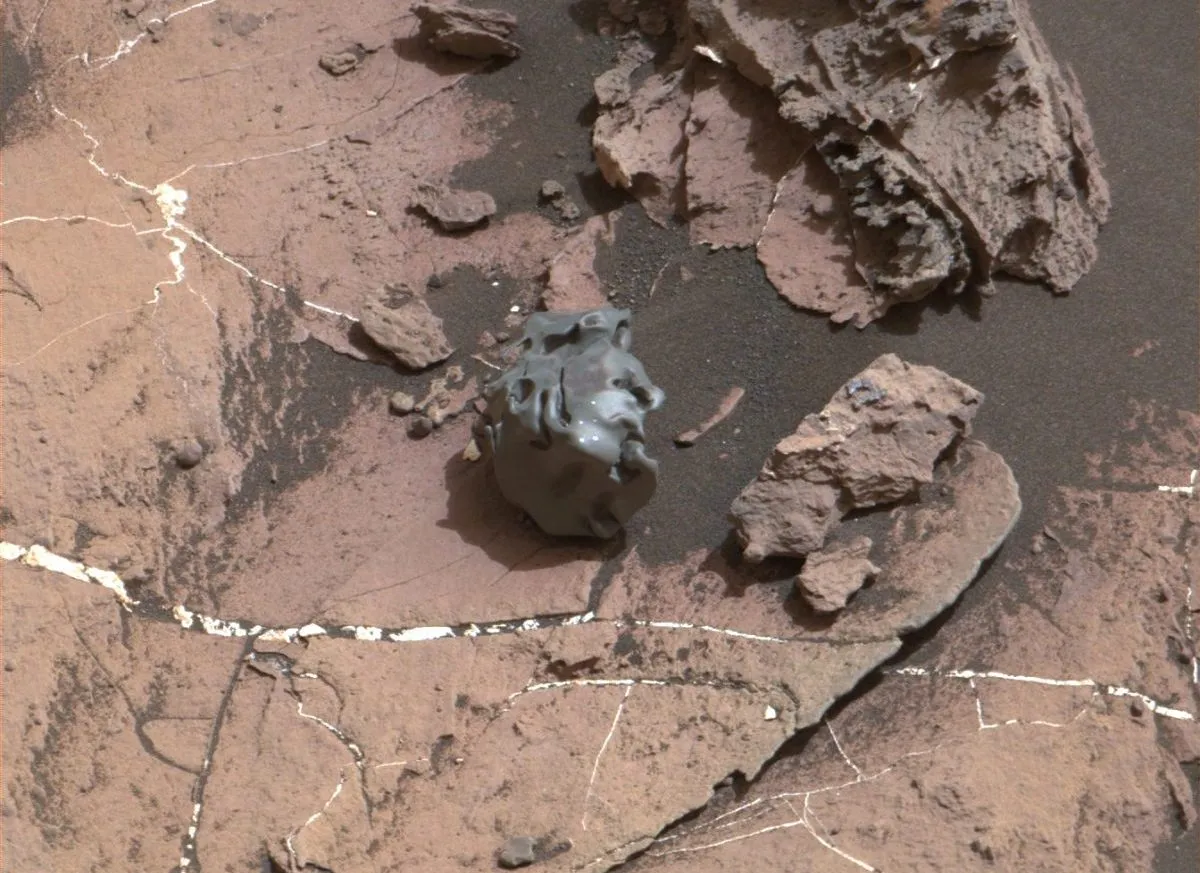
Defending Earth from meteorites
As well as a science opportunity, Chelyabinsk was a wake-up call to the dangers of meteor strikes.
1,500 people were injured by the blast, though most of these were from debris and glass sent flying by the shockwave, or sunburn from the bright light.
However, Chelyabinsk was a small asteroid over a small city. If the fireball had exploded over the skyscrapers of London or New York, it would have been a different story.
The last decade has seen many measures taken to prevent such a disaster.
Surveys have tracked down 95% of asteroids over 1km, the so-called ‘planet killers’.
The remaining asteroids are hidden by the Sun’s glare, the same reason that the Chelyabinsk meteor wasn’t seen ahead of time.
However, four of these were tracked down in November 2022, and other surveys are working on finding all the near-Earth asteroids down to 140m in size.
Meanwhile, NASA’s DART mission demonstrated we have the technology to deflect an oncoming asteroid, meaning we are more equipped than ever to defend ourselves from killer space rocks.
This article originally appeared in the February 2023 issue of BBC Sky at Night Magazine.

